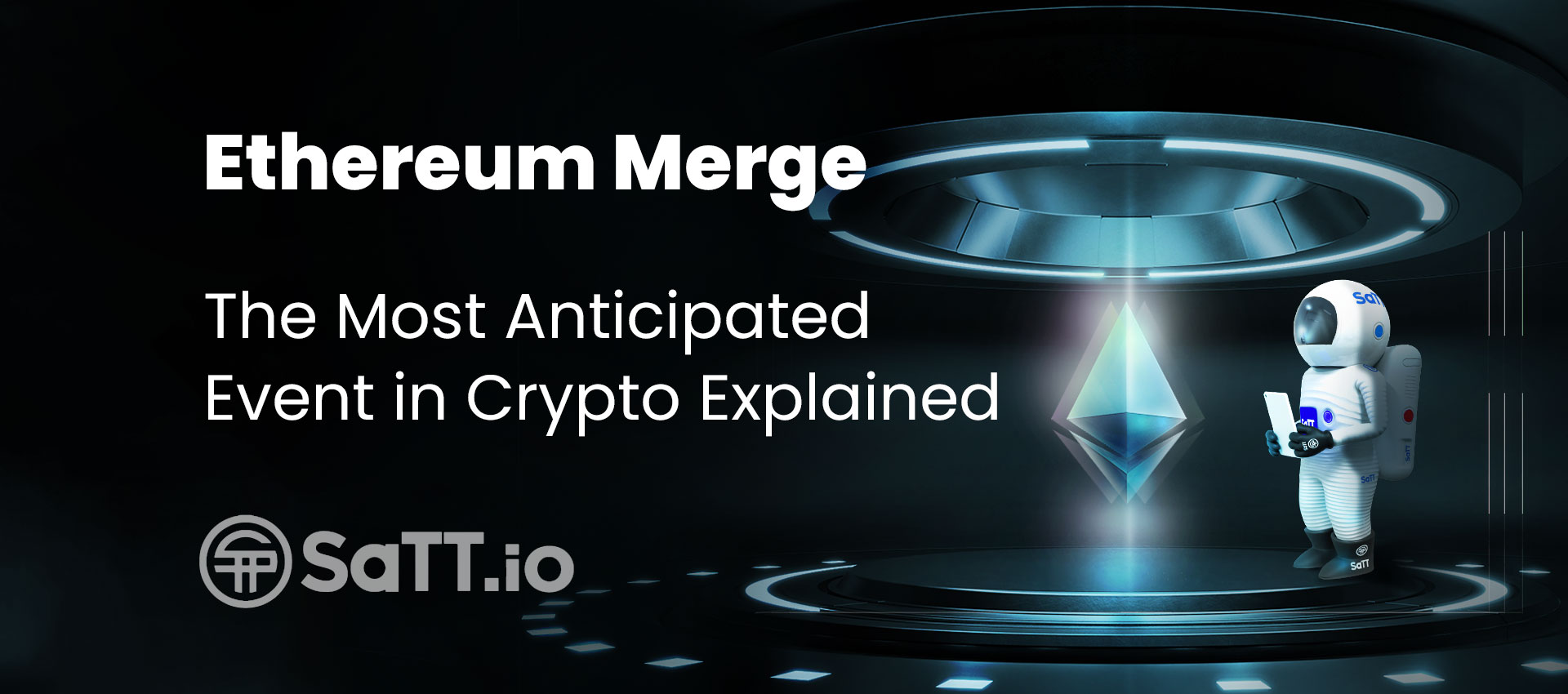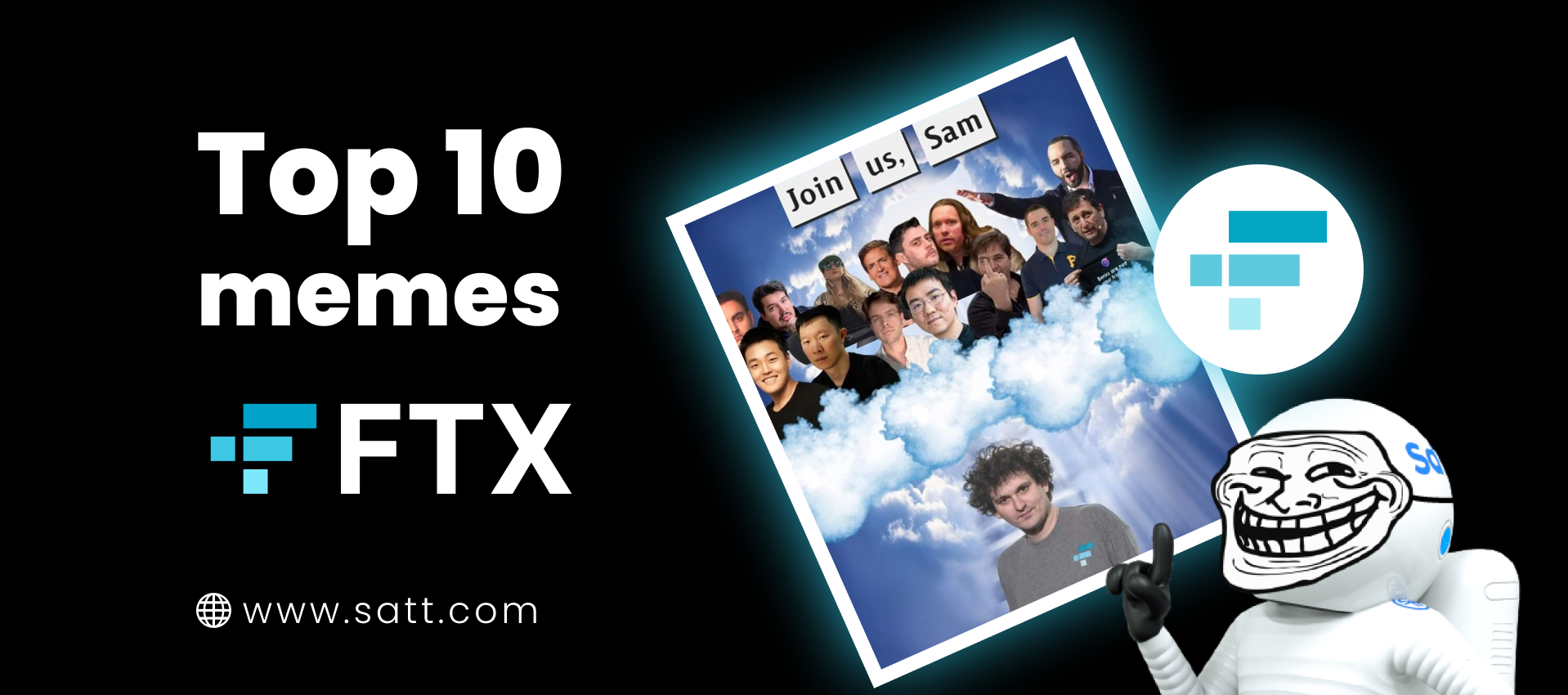
Ethereum Merge – The Most Anticipated Crypto Event
Although it is one of the most significant upgrades to the blockchain in the history of cryptocurrencies, the Ethereum Merge is still not well understood. In this article, we will explain the Ethereum Merge. Which economic effects does this have? What are the advantages of mergers, and what dangers could arise from doing so? Read on further to find out.
Table of Contents
Motivations Behind The Ethereum Merge
The fundamental objective of The Merge is to change Ethereum’s consensus mechanism from proof-of-work to proof-of-stake. In conclusion, miners are compelled to buy and run mining equipment as part of the proof-of-work (PoW) idea, which in turn protects the network. Under this model, miners invest computational power in exchange for a share of the transaction fees and the opportunity to issue new blocks.
With the use of the proof-of-invest (PoS) protocol, validators who check the network by staking ETH are responsible for its security. In this manner, the validators use hardly any energy. By switching to PoS, Ethereum hopes to reduce its energy consumption, increase its security, and lay the groundwork for scalability in the future. Prior to the launch of the Ethereum network, research began on the transition to PoS, which was one of the primary milestones included in the original Ethereum roadmap.
Ethereum’s engineers and researchers split the update into two parts to avoid making a single, potentially disruptive, change. The first phase, which included installing the Beacon Chain, was successfully completed in December of that year. Since the current PoW network protects hundreds of billions of dollars worth of economic activity, this allowed the construction of a separate parallel PoS chain that could be tested in production for a period of time.
A major factor in the decision to release the Beacon Chain early was to provide stakeholders enough time to gather enough ETH to secure the network at the time of the Merge. Tokens worth over 13 million ETH were being staked on the Beacon chain at the time of writing this article, with over 400 thousand validators participating. You’ll learn more about The Merge, the second step in the PoS transition, and how it brings together the Beacon Chain’s consensus layer and Ethereum’s EVM state, in the next section of this blog post.
The move to PoS is motivated by a desire to cut Ethereum’s power consumption for security by 99.5%. Thus, many claims that Ethereum, DeFi, and NFTs would “destroy the world” are rendered moot. As a consequence, the Ethereum network is now ESG compliant, which might be attractive to businesses with a strong interest in studying the regulatory landscape of the cryptocurrency industry. Those that are concerned about the impact of cryptocurrencies on the environment, such as gamers and NFT artists, may find Ethereum more enticing as a result of this.
Since the security of the PoW and PoS chains is paid for by ETH issuance, completing the Merge would decrease ETH issuance. Soon after the Merge, the PoW network will be decommissioned, drastically reducing the rate at which new ETH is created. Triple Halving describes the issue decrease as being equivalent to three halving of Bitcoin’s issuance.
On top of that, another argument in favor of the merger and the switch to PoS is that Ethereum fans will be able to defend Ethereum from the comfort of their own homes. Participating in consensus will no longer be confined to institutions and sophisticated miners.
This ought to further decentralize the network and increase its resistance to attacks. Now that we know why we’re doing The Merge, we can go into the nuts and bolts of how it works.
The Ethereum Merge Mechanics
If you like, picture Ethereum as a car speeding down the road. The goal of the Merge is to replace the internal combustion engine with an electric motor. The difficulty comes from having to accomplish it without having to stop the car. To achieve this, Ethereum developers created a separate electric engine and tested it for approximately 1.5 years with a real stake. This new electric engine functions in combination with the present gas engine. After the Merge, the car will no longer utilize its gas-powered engine and will instead rely on an electric drivetrain. To begin with, doing this method enables parallel testing of the electric engine. The second benefit is that we can swap engines without having to stop the car. In the context of Ethereum, “stopping the vehicle” would entail suspending block formation, resulting in no new transactions being recorded to the blockchain.
As one would anticipate, this would be incredibly disruptive, especially for DeFi, so Ethereum devs wish to avoid it at all means. I hope this analogy helps you comprehend the Merge.
Here’s a more technical description of this improvement.
As the name implies, the Merge is in charge of combining the user state of the Ethereum network with the PoS Beacon chain. For the time being, prior to the shift to PoS, node operators validate the Ethereum network using one of the existing client implementations such as Geth, Erigon, or Nethermind. The execution layer (EVM) and the consensus layer are merged in certain client implementations (PoW) (PoW). The execution and consensus layers are unbundled in order to simply transition the Ethereum network to the PoS paradigm. This means these layers may be run separately from one another. They may even be produced by completely different teams who specialize in one of the layers.
Following the Merge, a full node will be formed consisting of an execution node and a consensus node. An Engine API is available for coordinating interactions between execution and consensus nodes. If the consensus and execution layers can be separated, the Beacon Chain might be deployed more rapidly without requiring attention to the latter. Prysm, Lighthouse, and Teku are the most prevalent consensus layer implementations at the moment.
Existing client implementations will become execution layer clients and will work with consensus layer clients to form a full Ethereum node. There are different combinations of execution and consensus clients with diverse client implementations on both levels. For example, one validator may elect to utilize Prysm in combination with Geth. Lighthouse may also be used in conjunction with Nethermind.
There are 20 pairwise combinations with 4 popular execution clients and 5 consensus clients. When the Merge happens, execution clients such as Geth will begin listening for blocks from the PoS chain. The TERMINAL Sum DIFFICULTY variable, which specifies the total of the proof of work difficulties of every block gathered on the Ethereum PoW network, will be utilized to compute the trigger for this shift. Nodes switch to following the canonical PoS chain when the chain collects enough proof of work to exceed the TERMINAL TOTAL DIFFICULTY.
It’s worth noting that, for the first time, an Ethereum upgrade will be triggered by total difficulty rather than the typical block height. This is to prevent an attacker from mining low-difficulty malicious forks that would meet the block height requirement during the Merge and generate confusion on the final PoW block. Following the Merge, all Ethereum applications should work identically as they did previous to the Merge, with the state and transaction history retained.
This indicates that if we were a liquidity provider on Uniswap previous to the Merge, the situation will stay the same after the Merge, and we will continue to supply liquidity on Uniswap. If we already have an outstanding loan on Aave, this one will stay in effect. End users should not discover any changes.
The transfer has gone through several extensive rounds of testing, including the merging of shadow forks and testnets. Shadow forks are forked versions of existing Ethereum networks. They may be combined to better identify issues related to the current state of the network. These forks are generally abandoned after testing and serve simply to expose any prospective concerns.
Unlike most shadow forks, merged testnets usually continue to run as PoS networks. As a result of the consolidation, developers will have access to an Ethereum-like chain on which to test their software. After Ropsten and Sepolia, Goerli is the most popular and widely utilized long-lived testnet to merge.
The announcement of the mainnet merge will come when this has been satisfactorily completed. Now, let’s speak about client diversity, which was one of the fascinating challenges that led to the Merge being delayed.
Client Diversity
Unlike many other systems, Ethereum does not reliant on a single client implementation. Presently, Geth, Nethermind, Erigon, and Besu are the four most widely used implementations. Having numerous implementations allows us to immediately switch to a different functional client if a fault in the software we’re using is identified. This makes Ethereum more resistant to attacks because even if a defect or a malicious exploit is introduced by one of the clients, the implications are confined.
Client diversity becomes even more crucial following the Merge. This is because a bug introduced into the PoS network could have various implications depending on the staking share impacted. Let’s begin with the worst-case scenario. We do not want a bad state root to be settled into existence if the problem affects 23% or more of the stake.
If the mistake affects 12 or more clients, it may result in the construction of a dominant invalid chain, which will not be completed but will be withdrawn. Better than 23, but still not terrific.
Finally, if the problem affects at least one-third of the clients, no new network transactions will be performed. If we consider the outcomes that may occur, we can begin to see the value of having a diverse clientele.
Assume that 70 percent of the consensus customers are utilizing Prysm as their main solution. If a flaw is identified in this implementation, the network instantly suffers the worst-case scenario, with more than two-thirds of the clients afflicted, and Ethereum is prone to entering a horrible state.
If Prysm controls 40 percent of the network and a corresponding issue is revealed, the Ethereum network will halt concluding until the problem is remedied or new backup clients are put up, putting Prysm’s network share below 13.
Prysm’s market share was around 40 percent of the consensus customers at the time of recording this article.
This will greatly improve network resilience, up from about 70% in early 2022.
Let’s have a look at the consequences of the Merge now.
Implications
To begin with, the block time will not be the same as it is on the current PoW chain.
The average block time for PoW is often believed to be about 13 seconds.
Following the Merge, time is broken into 12-second fixed-duration segments. Because some slots may skip a block, the average block time will most likely be higher than 12 seconds but should be less than 13 seconds.
Second, the Merge will decrease the block time variance, leading to quicker transaction confirmations on average.
The Merge will also highlight the differences between Bitcoin and Ethereum.
Bitcoin will continue to be the tried-and-true proof-of-work network, while Ethereum will be powered by the relatively new proof-of-stake energy-efficient technology.
Another big benefit is that it will be more difficult to attack the network owing to greater economic security and the ability to slice attackers.
Also fantastic news for gamers: once mining becomes outdated, the GPU market will most surely be overwhelmed with millions of graphic cards.
The merger will very probably lower the supply of ETH over time and enhance media interest in it as a “deflationary asset.”
Another big implication. One hundred people or so are engaged in the Merge’s development.
Following the Merge, these folks may continue working on future modifications such as sharding.
Misconceptions About The Ethereum Merge
There are a few notable misconceptions involving the Merge as well. Before anything else, the Merge does not improve Ethereum’s scalability or reduce transaction costs.
The previously reported modest reduction in block time may result in a tiny increase in throughput, but what is most crucial is that the Merge and change to PoS build the groundwork for bigger scalability gains to be delivered in later network upgrades.
Second, the Merge does not instantly enable ETH withdrawals from validators.
After the Merge, this feature will be activated in one of the hard forks.
It’s worth mentioning that transaction fees are received after the Merge has its own recipient ETH address on the EVM, hence ETH obtained via transaction fees will be available instantaneously.
Also, as we showed in the previous section, Ethereum does not have to pause in order to enable the transfer. This is also another popular misperception.
The idea that the beacon chain or Ethereum 2.0 would need a separate ETH currency is another persistent misconception.
The final misconception to examine is that ETH supply will continue to drop and ultimately reach zero. This is also false, as ETH supply will find an equilibrium dependent on network demand, specifically the ETH burn rate from transaction fees and ETH issuance. This equilibrium may exist at different levels and change through time, but it will never reach zero.
According to current forecasts, the ETH supply will peak at 120M ETH at the Merge and settle into a long-term equilibrium between 60M and 100M ETH in a few decades.
This should clear up some of the widespread misconceptions.
There is risk associated with The Merge, just as there is with every other major technology upgrade.
Here are some potential risks to be aware of. Most of them are connected to the shift to PoS rather than the Merge itself, but they are worth examining nevertheless.
After the Merge, the public selection procedure will choose which validators will propose the next block.
As a consequence, proposers are exposed to network Denial-of-Service (DoS) attacks.
For example, if the attacker is aware that they are one of the next proposers in line, they may try to DoS the current proposers, causing them to lose their slots and neglecting to include any high-value transactions that the attacker may now pick up.
The current standard for dealing with this problem is a single secret leader election that uses intelligent encryption to hide the identity of the next proposer from the attacker while disclosing it to the true proposer.
There are also questions of centralization related to the amassing of stakes in pools like Lido and Coinbase. These may end in attacks like censorship or extortion. There is also governance takeover risk and smart contract risk in the case of Lido.
One of the fascinating alternatives presented by the Lido community was to permit users who deposit ETH on Lido and earn stETH to vote on potentially dangerous propositions.
It’s nice to see the Ethereum community anticipating and resolving many of the probable issues linked with the Merge and the migration to PoS.
If these suggestions aren’t implemented right now, they might be included in a future hard fork to strengthen the network in the long run.
The Ethereum Merge is probably one of the largest and most anticipated breakthroughs in cryptocurrency history.
When it comes to the timeframe of the Merge, most people predict it will take place around September 2022.
This should be possible if significant issues are not found during the Goerli testnet merger.
Despite a few obvious concerns, the researchers and engineers have worked carefully to guarantee that there are no surprises during the mainnet merger.
Risks Associated With The Ethereum Merge
Following the Merge, Ethereum will be more secure and sustainable.
It will be in a prime location to take advantage of future big upgrades like the Surge, Verge, Purge, and Splurge. We’ll learn more about them in future articles, but it’s worth noting that all of the following phases may be worked on simultaneously.





